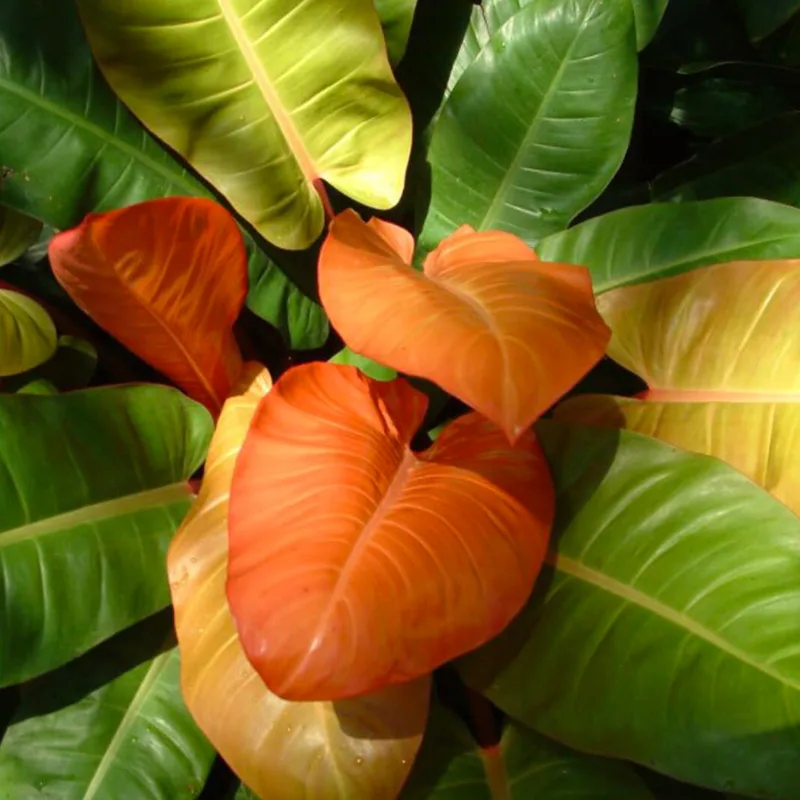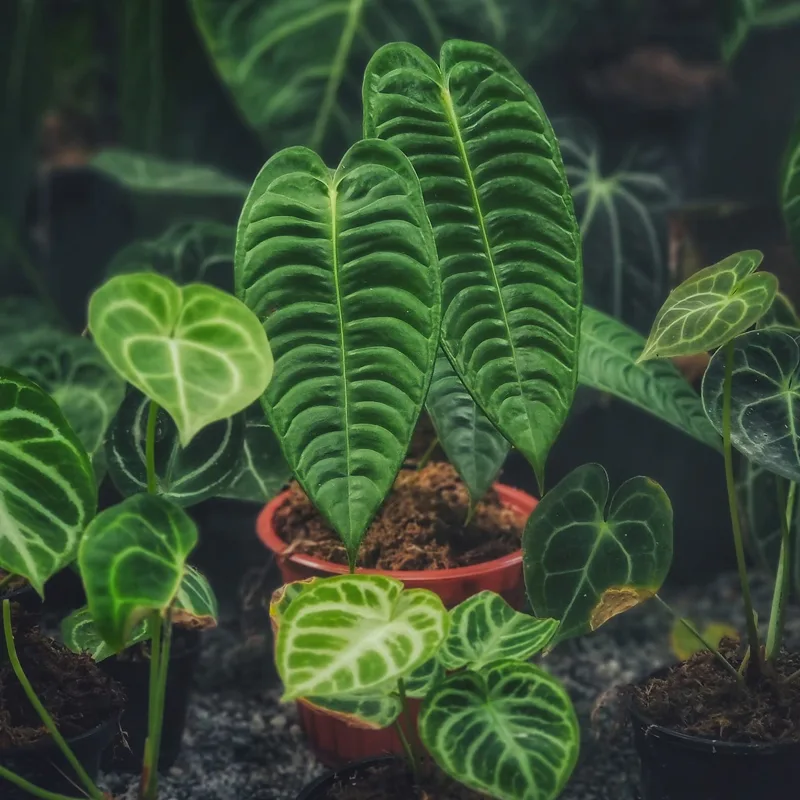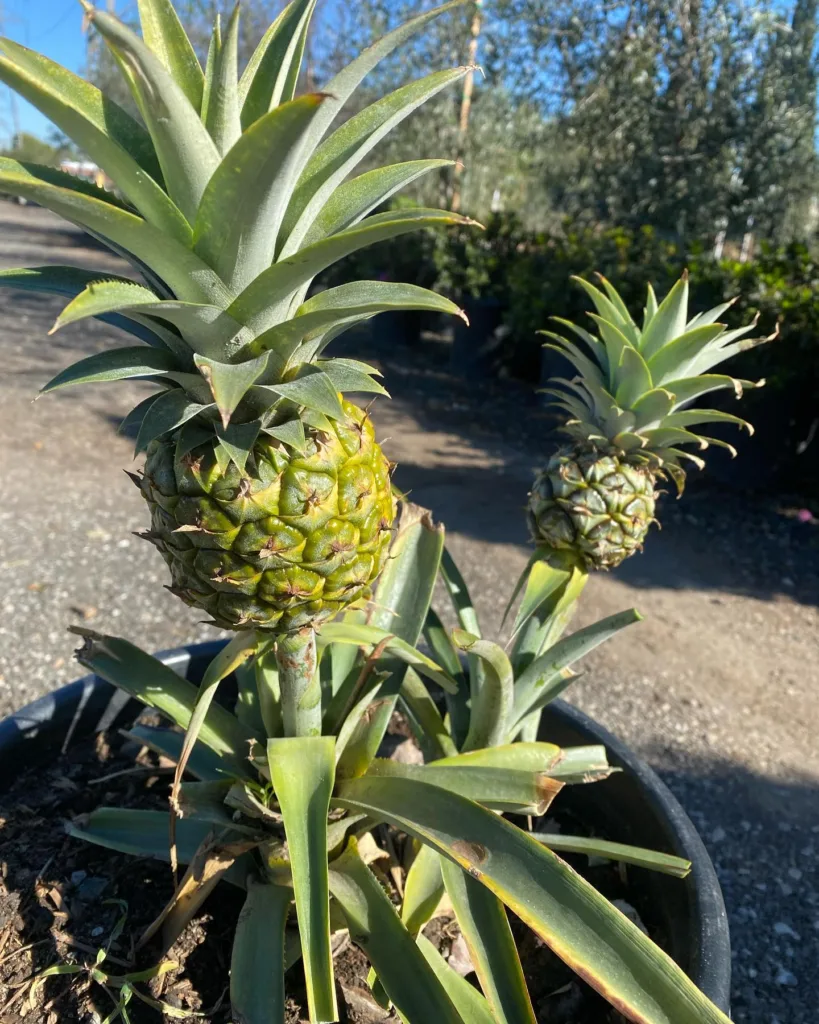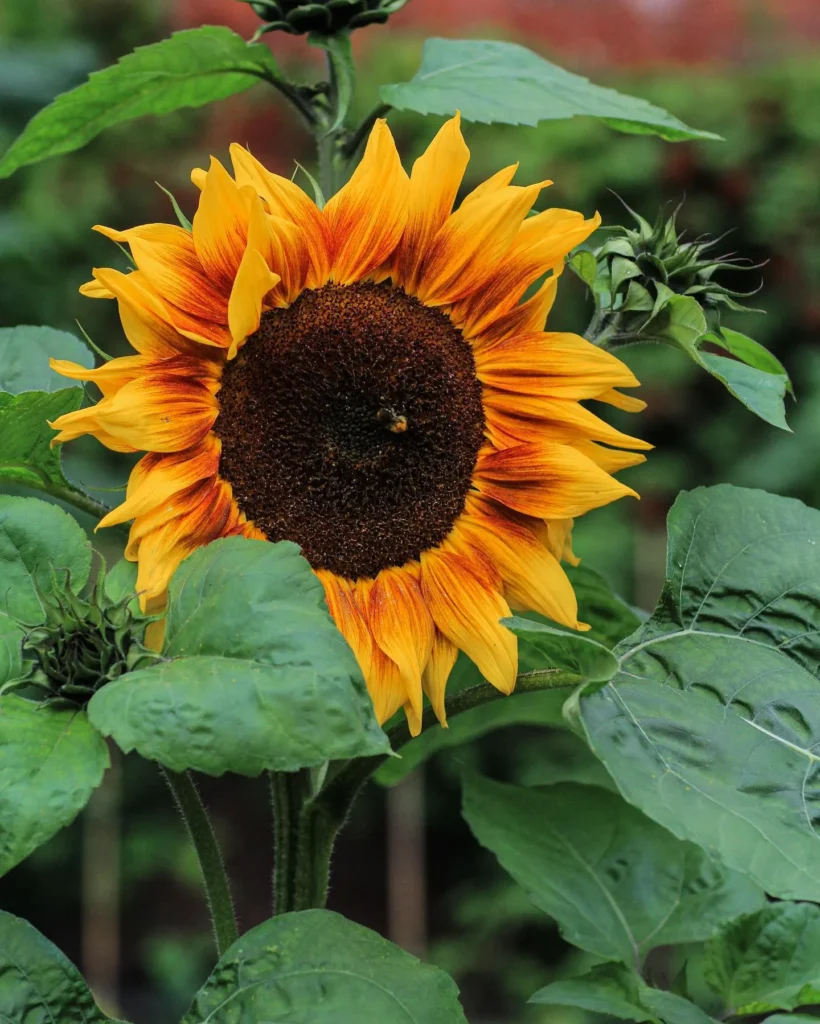
Top 100 Gift Ideas For Plant Lovers 2024
What does hibiscus taste like?
Hibiscus tea is like a tart and sweet surprise in a mug. It’s got this tangy flavor that reminds me of cranberry juice, but there’s also a hint of mellow sweetness, almost like those hibiscus flowers are hiding a secret stash of sugar. The first sip is always a pucker-up moment, but then it smooths out into this refreshing taste that makes me want to sip it all day long. Especially on a hot day, it’s like a cool, tart punch that quenches my thirst and wakes up my taste buds.
Do deer eat hibiscus?
Sadly, deer can and do eat hibiscus. I know because they’ve munched on mine before! One morning, I went out to admire my gorgeous hibiscus blooms, only to find them nibbled down to the stems. It was so frustrating, seeing the fruits of my gardening labor turned into a deer buffet. Now, I have to take extra measures to try and deter them, like using deer repellent sprays or even fencing in my poor hibiscus plants!
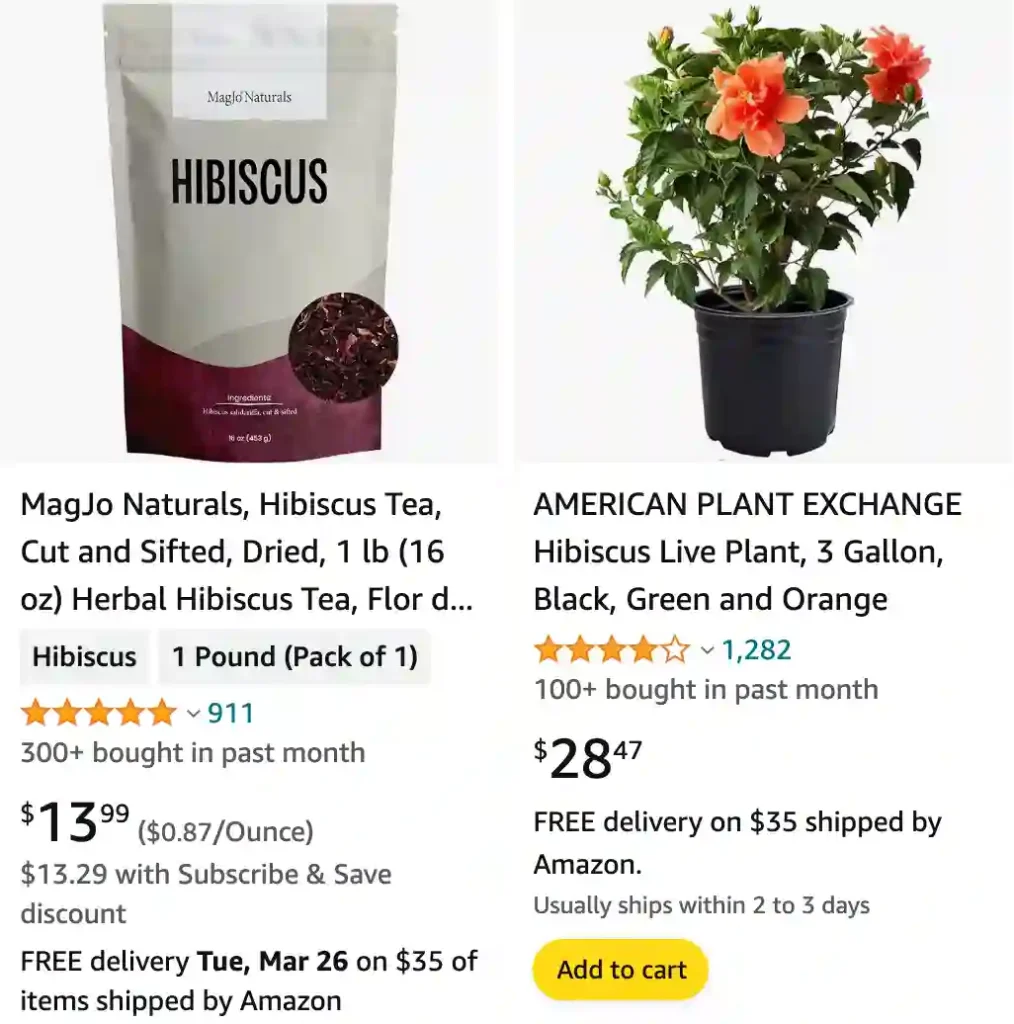
Is hibiscus tea safe during pregnancy?
While I love hibiscus tea normally, I wouldn’t touch it during pregnancy. It seems a little too risky. I remember reading online about how it might mess with hormones and even cause contractions. That’s not something I’d want to mess with during such a delicate time. There are so many other delicious herbal teas that are considered safe for pregnancy, like chamomile or ginger, that I’d rather stick to those for now. My little one’s health is more important than a cup of tart tea!
When to cut back hibiscus?
Here in my area, I like to wait until the threat of frost is completely gone before I cut back my hibiscus. Usually, that means waiting until early spring. I want my plants to have a head start before the blooming season really kicks off. Last year, I got a little impatient and pruned a bit too early, and we had a surprise cold snap that nipped at my poor hibiscus. They didn’t bloom as much as usual after that, so this year, I’m playing it safe.
Are hibiscus poisonous to cats?
This is tricky! I’ve heard conflicting information about hibiscus being poisonous to cats. Some websites say the whole plant is safe, while others warn that specific types, like Rose of Sharon, can be dangerous. To be on the safe side, I just try to keep my cat away from my hibiscus plants in general. He’s got a habit of nibbling on anything green, and I don’t want to take the chance of him getting sick. It’s better to prevent any potential problems than to find out the hard way if he’s sensitive to certain types of hibiscus.
Do hummingbirds like hibiscus?
Oh absolutely! My hibiscus bushes are a hummingbird haven. Every summer, the air around them practically buzzes with activity, their tiny wings moving so fast they’re just a blur. I love watching them hover near the big colorful blooms, their long beaks dipping in for the sweet nectar. It’s like my garden becomes the neighborhood snack bar for hummingbirds, and I wouldn’t want it any other way. Planting hibiscus is the best way to make sure my yard is always full of the cheerful sound of hummingbirds.
How long do hibiscus blooms last?
Sadly, enjoying the beauty of individual hibiscus blooms is a fleeting experience. They only last for one glorious day. Just when I think a particularly beautiful flower is going to be the star of my garden, it starts to fade and closes up by the next morning. It’s a little bittersweet since they’re so gorgeous, but it makes me appreciate their vibrant colors and delicate shape even more. Plus, my hibiscus plants are always pumping out new blooms, so while each flower may be short-lived, the show goes on!
Are hibiscus deer resistant?
Unfortunately, hibiscus aren’t really known for being deer-resistant. I learned this the hard way when I first planted some beautiful bushes in my yard. I thought their lush leaves and bright flowers would be safe, but those hungry deer proved me wrong. They snacked on my hibiscus like it was an all-you-can-eat buffet! Now I know that if you live in an area with deer, either be prepared to protect your hibiscus plants with fencing or repellents, or choose to plant something less appealing to their appetites.
Can you smoke hibiscus?
I’ve heard that you technically can smoke hibiscus, but I’ve never personally tried it and probably wouldn’t. It’s one of those things that might be possible but doesn’t sound very appealing to me. I’m used to enjoying hibiscus as a flavorful and refreshing tea. The idea of setting it on fire and inhaling the smoke is a little strange. I also worry about whether it’s even safe, not just for any potential effects but also the sheer fact that inhaling the smoke of any burning plant material isn’t great for your lungs.
Is a rose of sharon a hibiscus?
Yes, Rose of Sharon is definitely a type of hibiscus! It might be confusing because they have different common names, but they both belong to the same genus of flowering plants. It’s like how all poodles are dogs, but not all dogs are poodles. Rose of Sharon is a specific kind of hibiscus with its own unique qualities, but it’s still a member of the larger hibiscus family.
Can hibiscus grow indoors?
Yes, hibiscus can absolutely grow indoors! I have a gorgeous potted hibiscus that spends the colder months thriving on my sunny windowsill. It’s important to give them as much bright light as possible and keep the soil consistently moist, especially during the blooming season. With a little extra attention, you can enjoy the beauty of hibiscus flowers all year round, even if you don’t have a sprawling tropical garden outside.
How often to water hibiscus?
The key to watering hibiscus is to find that sweet spot where the soil stays consistently moist but never soggy. During hot summer months, I find myself watering my hibiscus plants almost every day, sometimes even twice a day when temperatures really soar. In cooler weather or when my hibiscus is indoors, I back off the watering to every few days. I always check the soil with my finger first – if the top inch or two feels dry, it’s time to give them a good drink.
How to pronounce hibiscus?
The most common way to pronounce hibiscus is “hi-BIS-kus”, with the emphasis on the second syllable. Some people also pronounce it as “hi-bis-KUS”, which is also considered correct. The key is to make sure that middle syllable really pops!
Are all hibiscus edible?
While many hibiscus varieties have edible parts, it’s definitely not a good idea to go munching on just any hibiscus plant you find. Hibiscus Sabdariffa is the most well-known edible type, and it’s the one used to make the delicious tart tea I love. Before trying any other varieties, it’s essential to do your research and make absolutely sure they’re safe for consumption. Some hibiscus species might contain compounds that could make you sick, so it’s always better to err on the side of caution.
Do hibiscus like coffee grounds?
There’s a bit of a debate about whether hibiscus plants love coffee grounds or not! Some gardeners swear by them, while others are more cautious. Coffee grounds are slightly acidic, so they can help lower the pH of the soil, which hibiscus generally like. They also add some nutrients, which is always a bonus. However, there’s also a risk of overdoing it and making the soil too acidic with frequent use. It’s probably best to use coffee grounds on your hibiscus plants in moderation, along with other fertilizers and amendments, rather than relying on them as your sole source of nutrients.
What is hibiscus in Spanish?
There are a few ways to say hibiscus in Spanish, depending on the specific context:
- Hibisco: This is the general term for the hibiscus plant itself.
- Flor de Jamaica: This translates to “Jamaica flower” and refers specifically to the variety of hibiscus used to make hibiscus tea.
- Malva Rosa de China: This means “Chinese Rosemallow” and is another name for the hibiscus plant.
What to do with potted hibiscus in winter?
The best way to handle a potted hibiscus in winter depends on your climate.
- Tropical Climates: If you’re lucky enough to live somewhere without harsh freezes, your hibiscus can happily stay outdoors year-round! Just be mindful of dropping temperatures and consider bringing it onto a covered porch or indoors on particularly frosty nights.
- Mild Winters: If you have a mild winter with only occasional light frosts, you might get away with leaving your potted hibiscus outdoors. Provide some protection, like wrapping the pot with burlap or moving it close to a sheltered building wall.
- Cold Winters: For areas with freezing temperatures, the safest bet is to bring your hibiscus indoors for the winter. Find a bright, sunny spot like a windowsill and water sparingly, only enough to keep the soil from completely drying out. Be prepared for some leaf drop as it adjusts, but new growth should sprout once spring arrives!
Why is my hibiscus not blooming?
It’s so frustrating when your hibiscus plant gets all leafy and green but refuses to bloom! Here are a few things that might be the culprit:
- Not Enough Sunlight: Hibiscus are sun-worshipers! They need at least 6 hours of direct sunlight each day to power all those beautiful blooms. If yours is in a shady spot, try moving it somewhere sunnier.
- Improper Fertilizer: Giving too much nitrogen fertilizer will encourage lush green growth but few flowers. Look for a fertilizer with a higher phosphorus content (that middle number on the fertilizer bag) to encourage blooming.
- Overwatering or Underwatering: Hibiscus are a bit picky about water. Too much, and their roots could rot, too little and they’ll get stressed. Aim for consistently moist but not soggy soil.
- Pruning at the Wrong Time: If you pruned your hibiscus too late in the season, you might have accidentally cut off the buds that would have become flowers. It’s best to prune in early spring before new growth really starts.
If you’ve checked all these things, it’s possible your hibiscus just needs a bit more time or some extra TLC to get it ready for its floral debut!
Can dogs eat hibiscus flowers?
It’s best to keep your dog away from hibiscus flowers unless you’re absolutely certain they’re a non-toxic variety. While the majority of hibiscus species are considered safe for dogs, there are a few types, like Rose of Sharon, that can cause stomach upset, vomiting, and diarrhea if ingested. Since it can be hard to tell exactly what kind of hibiscus you have, avoiding them altogether is the safest bet to keep your furry friend happy and healthy.
How to deadhead a hibiscus?
Deadheading your hibiscus is super easy and will help encourage more of those gorgeous flowers! Here’s how to do it:
- Find a spent bloom: Look for flowers that are starting to fade, droop, or turn brown. They’re past their prime and ready to be removed.
- Follow the stem: Gently trace the flower stem back to where it joins the main plant. You should see a slight bulge or swelling just below where the flower attached.
- Make the snip: Take a clean pair of pruning shears or scissors and snip the stem just above that slight bulge.
- Repeat!: Keep an eye out for fading flowers and continue to deadhead regularly. This will encourage the plant to put its energy towards producing new blooms instead of forming seeds.
That’s it! Your hibiscus will thank you for the extra attention with a profusion of beautiful flowers.
What does hibiscus smell like?
Hibiscus doesn’t have a single, super-defined scent. Different varieties can have slightly different smells, and it also depends on whether you’re talking about the fresh blossoms or dried hibiscus for tea. Here’s what I think of:
- Fresh Flowers: Most fresh hibiscus flowers have a delicate, slightly sweet, and sometimes a bit tangy or citrusy smell. It’s sort of a faint tropical scent, not overpowering like some lilies or roses can be.
- Dried Hibiscus: Dried hibiscus, like what you use in tea, has a more tart and fruity scent. It reminds me a bit of cranberries, but with a subtle floral undertone.
Overall, I find the smell of hibiscus to be quite pleasant – light, refreshing, and a little bit exotic!
Does hibiscus flowers close at night?
Yes, hibiscus flowers usually close up at night! They are day-bloomers, meaning they open their petals wide to soak up the sun during daylight hours. When the sun starts to set, they’ll gradually close up and remain that way until dawn. It’s part of their natural rhythm and a way to conserve energy.
How long does hibiscus bloom?
This depends on a couple of factors:
- Individual Bloom: Each beautiful hibiscus flower has a short lifespan, lasting only a single day. It’s a bittersweet sight, as they open in the morning with all their vibrancy then fade away by nightfall.
- Blooming Season: The good news is that hibiscus plants are prolific bloomers! Depending on the variety and your climate, the overall blooming season can last anywhere from a few weeks to several months. Warmer climates usually enjoy a longer flowering period.
So, while each bloom is fleeting, your hibiscus can keep the floral show going for a good stretch of time!
How to make hibiscus tea from fresh flowers?
Here’s how to turn your fresh hibiscus flowers into a delicious and refreshing tea:
Ingredients:
- Fresh hibiscus flowers (the variety used for tea is called Hibiscus sabdariffa)
- Hot water
- Sweetener of choice (optional – honey, sugar, etc.)
- Lemon or lime (optional)
Instructions
- Harvest and prepare the flowers: Gently pick the flowers and remove the green calyx (the base part of the flower). Rinse the petals thoroughly.
- Steep: Place the petals in a heatproof mug or teapot. Pour boiling water over them and let steep for 5-10 minutes. The longer you steep, the stronger and more tart the tea will be.
- Strain and sweeten: Strain the tea into a cup, discarding the petals. If you’d like, add your preferred sweetener to taste.
- Flavor boost (optional): Squeeze in a bit of lemon or lime juice for an extra citrusy kick! It’ll also make the tea change to a gorgeous pink color.
- Enjoy hot or cold: Your hibiscus tea is ready! Enjoy it warm on a cozy day or pour it over ice for a refreshing summer drink.
Tips:
- Experiment with different steep times to find your perfect flavor intensity.
- You can add other herbs or spices while steeping for a unique twist, like ginger or mint.
- Store any leftover tea in the refrigerator for a few days.
How to tell if hibiscus is hardy or tropical?
Here are a few ways to figure out if your hibiscus is a hardy or tropical variety:
- Leaf Shape and Texture:
- Tropical Hibiscus: Shiny, smooth, often glossy leaves with a leathery texture.
- Hardy Hibiscus: Larger, heart-shaped leaves with a slightly fuzzy or textured surface.
- Flower Colors:
- Tropical Hibiscus: Bright, vibrant colors like yellow, orange, peach, and pink. Often have multi-colored blooms or dramatic color patterns.
- Hardy Hibiscus: Mostly shades of white, pink, and red. Less variety in coloration.
- Bloom Size:
- Tropical Hibiscus: Generally smaller blooms, usually around 4-6 inches across.
- Hardy Hibiscus: Huge, show-stopping blooms that can reach up to a foot in diameter!
- Cold Tolerance:
- Tropical Hibiscus: Very frost-sensitive and won’t survive in temperatures below freezing.
- Hardy Hibiscus: As the name suggests, they can tolerate freezing temperatures and come back from the roots in spring, even in colder climates.
- Where You Got It: Did you purchase your hibiscus from a garden center specializing in tropical plants or from a general nursery? This can give you a good clue about its type.
If you’re still unsure, try searching online for images of different hibiscus varieties to compare with your plant.
Do hibiscus like acidic soil?
Yes, hibiscus plants generally prefer slightly acidic soil. They thrive best in soil with a pH between 6.5 and 6.8. This slightly acidic environment helps them absorb the nutrients they need to grow and produce those beautiful blooms.
How to make hibiscus syrup?
Here’s a simple recipe for making a delicious hibiscus syrup that you can use for cocktails, sodas, desserts, and more:
Ingredients:
- 1 cup dried hibiscus flowers (Hibiscus Sabdariffa)
- 2 cups water
- 1 cup granulated sugar
- Optional: squeeze of lemon or lime juice
Instructions:
- Make the tea: In a saucepan, combine the dried hibiscus flowers and water. Bring to a boil over medium heat, then reduce heat and simmer for about 5 minutes, or until the water turns a deep red color.
- Strain: Remove the pan from heat and strain the hibiscus tea using a fine-mesh sieve. Discard the flowers.
- Add sugar: Return the strained tea to the saucepan and add the sugar. Stir over medium heat until the sugar dissolves completely.
- Cool and store: Remove from heat and let the syrup cool completely. You can add a squeeze of lemon or lime juice for extra tartness if desired. Transfer the syrup to an airtight jar or bottle and store it in the refrigerator for up to 2 weeks.
Tips:
- Experiment with flavors: Add other spices like cinnamon sticks, fresh ginger, or cloves while simmering for additional flavor.
- Make it a cocktail: Mix hibiscus syrup with sparkling water, a shot of your favorite liquor, and a squeeze of lime for a refreshing and unique cocktail.
- Sweeten your desserts: Drizzle hibiscus syrup over ice cream, pancakes, or yogurt for a delicious and floral twist.
Enjoy!
What is eating my hibiscus leaves?
Unfortunately, hibiscus plants are a tasty snack for several different pests. Here are some of the most common culprits:
- Aphids: These tiny sap-sucking insects are often found in clusters on the undersides of leaves and new growth. They can cause leaves to yellow, curl, and become distorted.
- Japanese Beetles: These metallic green beetles with a voracious appetite love to munch on hibiscus leaves, leaving behind skeletonized remains.
- Caterpillars: Several types of caterpillars, like sawfly larvae, find hibiscus leaves quite delicious. They’ll leave ragged holes as they chomp away.
- Grasshoppers and Lubber Grasshoppers: These larger insects can quickly devour leaves and flowers.
- Thrips: These tiny, slender insects can cause distorted leaves and buds on hibiscus plants. They’re hard to spot, but their damage is obvious.
- Whiteflies: These tiny, gnat-like insects suck sap from leaves and leave behind a sticky residue.
How to find the culprit:
- Thorough Inspection: Closely examine your hibiscus plant, especially the undersides of leaves and new growth. Look for any of the pests mentioned above, or any signs of damage like holes, discoloration, or sticky residue.
- Timing: Pay attention to the time of day you notice the damage. Some pests, like Japanese beetles, are active during the day, while others like grasshoppers might do their damage at night.
Once you’ve identified the pest, you can research the best way to get rid of them and protect your hibiscus plant.
How to revive a dying hibiscus plant?
Here’s a step-by-step guide on how to potentially save your dying hibiscus plant:
- Diagnose the Issue:
- Overwatering: Check if the soil is constantly soggy and if the roots are mushy or rotting.
- Underwatering: Look for dry, crumbly soil and wilting, drooping leaves.
- Pests and Diseases: Inspect carefully for insects (look under leaves!), signs of yellowing, spots, or distortion in growth.
- Sun Stress: Assess if your plant is getting too much or too little direct sunlight. Hibiscus love full sun, but intense heat can damage them.
- Nutrient Deficiency: Are there signs of pale leaves with discolored veins or stunted growth? Your plant may be lacking nutrients.
- Take Action
- Adjust Watering: If overwatered, repot with fresh, well-draining soil. If underwatered, water thoroughly and maintain consistent moisture.
- Treat Pests & Diseases: Identify the specific problem and use appropriate treatments (neem oil, insecticidal soap, or fungicides).
- Change Sun Exposure: Move your hibiscus to a spot with at least 6 hours of full sun if it’s lacking light, or provide afternoon shade if it’s scorching.
- Fertilize: Use a balanced fertilizer specifically formulated for hibiscus, following the instructions carefully.
- Prune: Remove any dead or severely damaged leaves and branches to encourage new growth.
- Be Patient & Consistent: Reviving a plant takes time. Provide proper care and monitor its progress. Don’t give up too soon!
Important Notes:
- If your hibiscus is severely damaged or root rot is extensive, it might be too late to save it.
- Prevention is key! Proper watering, sunlight, and regular inspections can prevent many hibiscus problems.
Let me know if you have more specific details about your hibiscus plant – I can give more tailored advice.
